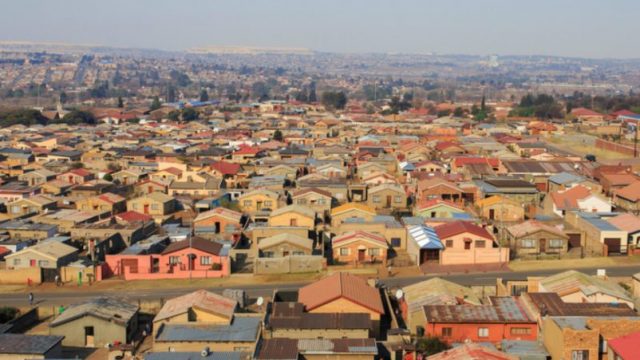This article originally appeared on AFKInsider.com.
Do a Google search of Soweto hotels and you’ll probably come up with a list of four. Two of them are guest houses and one is a bed-and-breakfast. The bottom line: Soweto has one hotel.
It’s a luxurious four-star hotel with 46 standard rooms and two presidential suites located on Freedom Square, across from the Walter Sisulu Square of Dedication Convention Center. Groups of up to 3000 meet at the convention center.
Soweto is home to 1.3 million people, or 1.6 million, or 3.5 million, depending on who you ask. The taxi driver who took me to eat at Sakhumzi Restaurant on Soweto’s famous Vilakazi Street said Soweto has 3.5 million residents — he was one.
An estimated 40 percent of Johannesburg area residents live in Soweto, but Soweto has one hotel. It’s called The Soweto Hotel.
On our way there, we passed a guy wearing a Santa hat who was directing traffic at the intersection of Klipspruit and Sifasonke (“We die together” in Zulu) streets.
The Soweto Hotel is one of seven local tourism endeavors and entrepreneurs that formed a cooperative to draw attention to tourism experiences available in Soweto.
The cooperative, So We Too, was co-founded by Raymond Rampolokeng, Soweto’s first ever bird guide and a leading conservationist in the area. In 2007 he founded his company, Bay of Grace Tours, providing birding tours for the first time in the history of Soweto, according to a report in BusinessDayLive.
TripAdvisor ranked Sakhumzi the No. 1 restaurant in Soweto, and No. 93 out of 750 restaurants in Johannesburg.
The restaurant had all its bases covered for an authentic Soweto dining experience with a buffet that included umngqusho (samp and beans), pap and pumpkin, chakalaka (spicy vegetable relish) and lamb stew. The taxi driver and I watched the traffic on Vilakazi while eating at a long wooden table that had champagne bottles and fluted glasses on it. The champagne bottles weren’t just for decoration.
“On weekends, the locals buy Dom Pérignon,” said Archie Tsoku, Sakhumzi’s brand custodian, aka marketing manager. “We probably sell 24 bottles a month.” There were also less expensive offerings, such as Boschendal, Haute Cabrière and Rupert & Rothschild wines.
“Soweto gets a high number of visitors but there’s no place to stay,” Tsoku lamented.
The FNB stadium, also known as Soccer City, or the First National Bank Stadium, or The Calabash, is located in Nasrec, bordering Soweto. It’s where the 2010 Fifa World Cup was held, five kilometers from Sakhumzi. British boy band One Direction will perform there in March.
Visitors come by the busloads to get the authentic Soweto experience, buy crafts — made by Nigerians and Kenyans and Senegalese, but rarely by Sowetans, Tsoku said — and then the visitors get back on the buses and they go elsewhere to stay in hotels.
It’s easy to do business in Soweto, Tsoku insisted. “The rules are not punitive. Investors could partner with locals,” he said. “It’s an open market system.”
It’s not that local crafts aren’t being made in Soweto, Tsoku said. They are. They just aren’t being sold there. “Soweto crafts appear and disappear like comets,” he said. “There’s no factories here dedicated to Soweto craft.”
There’s a market for local Soweto carnivals and festivals, Tsoku said, that would attract huge crowds from outside Soweto.
In 2011, Bird Man Rampolokeng and the other So We Too members participated in a six-month mentorship program. Each business was linked with a mentor to scrutinize its business plan, bankability and objectives.
The seven businesses include the Soweto Hotel, Roots Restaurant and Gallery, TKD Tours (cycling and walking tours), Mahlatsi Arts and Crafts, Aahaah Shuttle and tours, Soweto Outdoor adventures and Bay of Grace Tours.
Combining birding, biking, dining, arts and accommodation, the seven tourist-related companies came up with 12-hour and 24-hour tours they market to corporate and leisure visitors.
“There are 3-to-4 million people living in Soweto. There’s a huge gap here,” Tsoku said, gazing off into the future.

